Antonio Gadal
Аненэрбе, операция Грааль
Одним из первых секретных проектов «Аненэрбе» была операция «Грааль». Ее идею подал лично Гитлер. Увлеченный романтическими легендами о Святом Граале и рыцарях Круглого стола, посвятивших себя его поискам, он мечтал о воссоздании чего нибудь подобного в современном мире. Собственно говоря, сам орден СС должен был стать воплощением ордена Круглого стола. Такой стол, к слову сказать, стоял в замке Вевельсбург – любимом детище Гиммлера – и использовался по самому, что ни на есть прямому назначению: за ним проходили собрания высших чинов СС и всевозможные мистические церемонии.
Но как Гитлеру удавалось сочетать увлечение Святым Граалем с ненавистью к христианству? Действительно, в его противоречивой натуре с трудом уживались две эти тенденции. «У меня не было никаких причин, – скажет фюрер впоследствии, – восхищаться всеми этими ничтожными рыцарями, обесчестившими свою арийскую кровь, следуя всем суевериям еврея Иисуса». Гитлер долго думал над разгадкой этого ребуса и, в конце концов, нашел выход: Грааль, говорил он, вовсе не является христианской святыней. Легенда о том, что это чаша с кровью Иисуса Христа, была придумана позднее. На самом деле Грааль гораздо более древнего происхождения, чем христианство, ему не менее десятка тысяч лет.
Montségur
Le château de Montségur (Montsegur en occitan) 42° 52′ 32″ N 1° 49′ 57″ E, construit en 1206, est un château qualifié de cathare. En effet, ce château fut implanté à l'emplacement arasé de l'ancien village fortifié qui constituait, jusqu'au siège de 1244, le lieu de résistance des cathares et des faydits. Les cotes architecturales démontrent que le château actuel fut conçu sur la base de la canne anglaise qui ne fut introduite qu'ultérieurement ce qui prouve que celui-ci a été partiellement reconstruit par la famille du nouveau Seigneur des lieux, le Maréchal de la Foi Guy II de Lévis après la reddition cathare de 1244.
Géographie
Située sur la commune de Montségur dans le département de l'Ariège et la région Midi-Pyrénées.
Le château, restauré, est situé sur le point culminant de la montagne qui surplombe le village, à 1 207 mètres d'altitude au dessus du Pays d'Olmes.
Отто Ран и Пиренейский Грааль
Поскольку о Граале говорится и пишется много, каждый ищет что-то значимое для себя. Самое загадочное здесь то, каким образом эта священная реликвия вообще оказалась связанной с альбигойцами? Ведь мы знаем так же и рассказ о том, что Иосиф Аримафейских лично отвез Чашу – если это была действительно чаша – в Англию, в Гластонбери…
(Кажется, что каждая страна по своему трактовала легенду о Граале, с учетом местных фольклорных особенностей и легенд... Проходя «сквозь» местную мифологию, эта легенда - и сам артефакт – обретали форму, в которой были наиболее приемлемы и священны в данной местности? В Англии, в Британии, где кельты и друиды почитали богиню Керрридвенн и ее священный котел – Грааль так же принял форму чаши. А в Пиренеях, где поклонялись Кибеле в пещерах и гротах, где находили метеориты, упавшие с неба, с их целительными свойствами – Грааль стал камнем, упавшим практически тоже с неба, из короны Люцифера. Не забудем, что легенды о Граале имеют больше литературное происхождение, скажем так, а не фольклорное.)
Отто Ран и Катары: между тайной и мошенничеством
Нашли ли нацисты чашу Грааля? Этот весьма каверзный и, казалось бы, праздный вопрос, однако, всерьез и весьма живо интересовал немецкий народ во время гитлеровского господства. Загадочная археологическая экспедиция, финансированная Третьим рейхом, отправилась на поиски драгоценного полумифического предмета во Францию, которую вскоре после этого оккупировали немцы – а точнее, в то самое место, на которое много веков назад пала легендарная тень катаров. Что же представлял из себя этот «исторический похода на самом деле?
Многие из тех, кто собирается углубиться в историю катаров, самой распространенной и жестоко подавленной ереси средневековой Европы, изучив источники этой подлинной религиозной революции, развернувшейся в Аквитании и на севере Италии, рано или поздно наткнутся на книгу, которая стала уже почти классикой для тех, кто изучает средневековье: «Крестовый поход за Граалем» немца Отто Рана.
The wooden book of Montségur
In the early 20th century, a series of palm leaves, containing anomalous writing, were apparently discovered within a hidden cache of the walls of the Cathar castle of Montségur. Though without any intrinsic value, the “wooden book” – as it became known – would become the centrepiece of the esoteric and metaphysical community; its discoverers even labelled it “the Oracle” and said it was able to contact the hidden masters of Agharta.
Montségur is seen as the final stronghold of the Cathar faith, a bastion of true devotion besieged by the worldly ambitions of the papal troops. In March 1244, the Cathars that had been locked inside the castle for months finally surrendered; approximately 220 were burned en masse in a bonfire at the foot of the pog when they refused to renounce their convictions.
Otto Rahn: A Hero's Journey
I recently visited the former South of France residence of the legendary Grail hunter Otto Rahn, only to discover that it was scheduled to be demolished, thus ending an era, and prompting this memorial.
I believe Otto Rahn (1904-1939) was a hero; the real Indiana Jones and prototype for Dan Brown’s Robert Langdon character. A tireless explorer, Rahn was a gifted researcher, committed to the quest like no one before, or since. Quite simply, he was a grail hunter extraordinaire.
Rahn was obsessed with the Cathars, and was convinced that their treasure remained hidden in the shadowy crevasses of the Pyrenees. His research led to Montségur, which he believed to be Munsalvaesche, the Mountain of Salvation of Wolfram von Eschenbach’s epic grail romance, Parzival. Not surprisingly, the entire region around Montségur soon became Rahn’s esoteric playground.
Otto Rahn in Wikipedia
Otto Wilhelm Rahn (February 18, 1904—March 13, 1939) was a German medievalist and a Obersturmführer (First Lieutenant) of the SS, born in Michelstadt, Germany.
Speculation still swirls around Otto Rahn and his research. From an early age, he became interested in the legends of Parsifal, Holy Grail, Lohengrin, and the Nibelungenlied. While attending the University of Giessen he was inspired by his professor, the Baron von Gall, to study the Albigensian (Catharism) movement, and the massacre that occurred at Montségur. Rahn is quoted as saying that "It was a subject that completely captivated me''".
Work
A review of Otto Rahn’s study of Grail lore by John J. Reilly
Anyone who undertakes the study of the intellectual underpinnings of Nazi Germany (1933-1945) will soon notice that at least some members of the regime were doing things that are not covered by the typical survey course in political theory. Researchers who attempt to investigate these anomalies will dig through a swamp of popular and crank literature about the Third Reich’s connection to the occult underground, some of it coincident with conspiracy theory and some of it (often the most coherent works) purely fictional. Nonetheless, a sober study of primary sources will reveal that not all the fantastic rumors were made up out of whole cloth.
Otto Rahn Bio
Berlin between the wars was a city known throughout Europe for its bohemian subculture of young intellectuals. Amongst the personalities who hotly debated the many modernist “isms” that were fracturing the old ideological certainties that had glued together the 19th century, few individuals were more colorful or conspicuous than a febrile dark-haired, green-eyed young man called Otto Wilhelm Rahn.
Rahn was welcomed in the cafes and nightclubs of 1930’s Berlin because he was a hyper-intense intellectual – a brilliant talker with a great deal to say but he was also a conspicuous outsider in that he was unfashionably dismissive of the emergent modernism that so excited his peers. Moreover, he had even less empathy with the cynicism and decadence that colored there lifestyle. Rather, like that of most Germans outside of Berlin, Rahn’s sensibility had been molded by influences wholly incompatible with the café society avante-garde.
English translator's foreword to Crusade Against the Grail
WHEN URBAN VERLAG IN FREIBURG published the first edition of Crusade Against the Grail [Kreuzzug gegen den Gral] in 1933, the book was not an immediate bestseller. But its eloquence deeply moved those who read it. One so moved was Albert H. Rausch, the 1933 Georg Biichner prizewinner who published under the pseudonym Henry Benrath. Rausch wrote an introduction for the book called Kreuz und Gral [Cross and Grail], which eventually appeared in the Baseler Nachrichten later in the year.

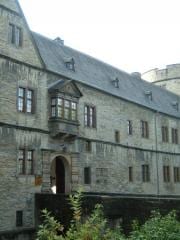
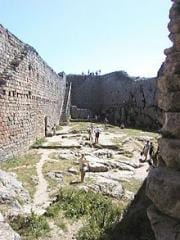
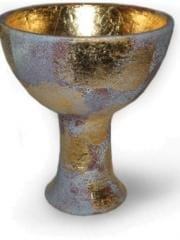
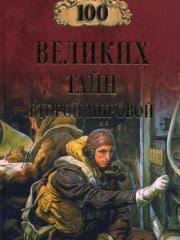
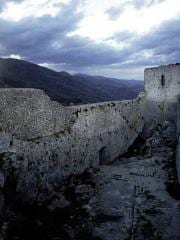
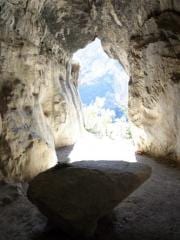

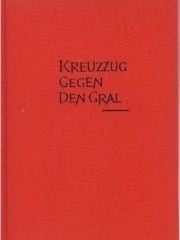
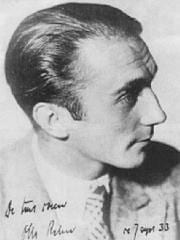
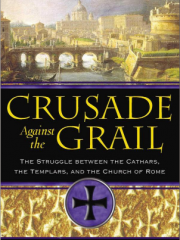
Neueste Kommentare
vor 13 Jahre 8 Wochen
vor 13 Jahre 8 Wochen
vor 13 Jahre 8 Wochen
vor 13 Jahre 8 Wochen
vor 13 Jahre 11 Wochen
vor 13 Jahre 17 Wochen